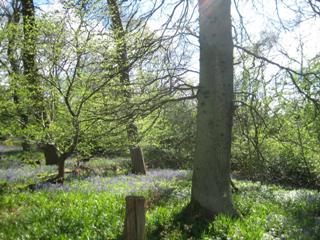Mar 4 2015
Rare historic records of the changing seasons are helping scientists better understand how woodland trees and flowers are responding to climate change.
 Trees come into early leafing at the arrival of spring. CREDIT: University of Edinburgh
Trees come into early leafing at the arrival of spring. CREDIT: University of Edinburgh
Researchers say the order in which different tree species come into leaf could be greatly changed within decades, owing to rising autumn temperatures triggered by soaring carbon emissions.
This could affect the long-term survival of different species in woodland communities, researchers say.
Scientists used records - compiled by one family over a 200-year period - to show that higher autumn temperatures affect the leafing times of woodland plants in the following spring.
Robert Marsham and his descendants recorded the spring leafing and flowering of woodland plants on their Norfolk estate from 1736 until 1947. Their record is one of the longest-running of its kind in the world.
Researchers at the University of Edinburgh and Biomathematics & Statistics Scotland have been studying how 14 woodland species responded to temperature changes in autumn, winter and spring. Using historic temperature records held by the Met Office - dating to 1772 - the team found that while all species tend to leaf and flower sooner when springs are warmer, warm autumns lead to species that normally leaf early - such as birch trees - taking longer to come into leaf.
Species that leaf later in the season - such as oak trees - appear not to be affected by temperatures in the previous autumn. Scientists predict that, within a few decades, oak will tend to come into leaf earlier than birch.
Studies of this kind were only made possible by the work of what we now call citizen scientists, such as Robert Marsham, the team says, demonstrating the legacy that citizen science can provide.
The study, published in the journal Global Change Biology, was supported by the Natural Environment Research Council and the Scottish Government.
Dr Ally Phillimore, of the University of Edinburgh's School of Biological Sciences, said: "Our predictions were made using citizen science observations that spanned three centuries. In the coming years citizen scientists can test our predictions via projects like Track a Tree and Nature's Calendar. For example, last autumn was very warm, so we might see oak come into leaf before birch this year."
Adrian Roberts, of Biomathematics & Statistics Scotland, said: "State-of-the-art statistical methods help us to use citizen science observations in developing valuable insights into how changes in our climate might affect woodland communities."